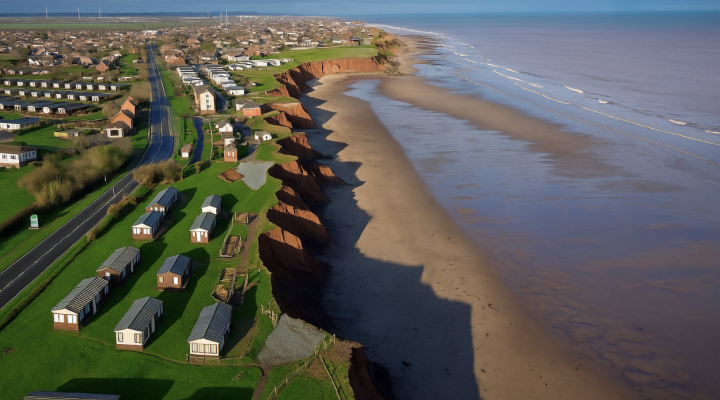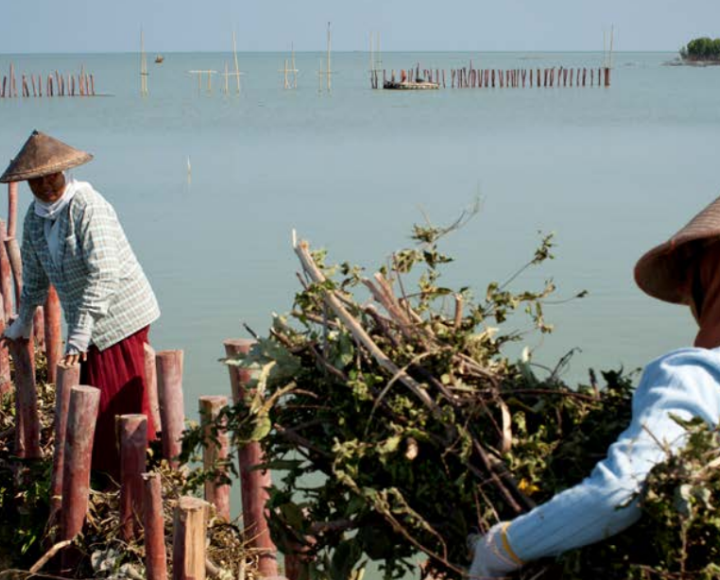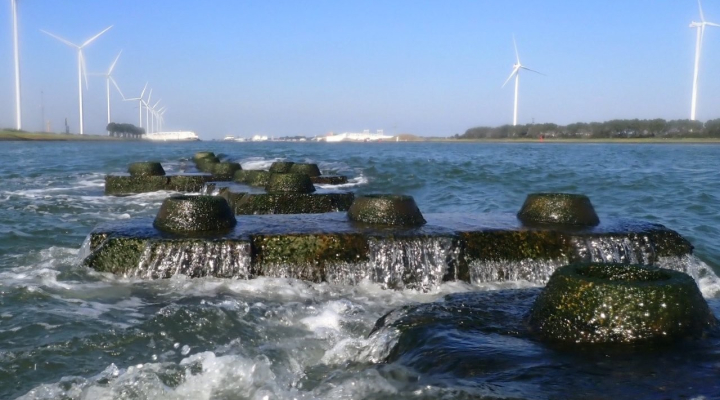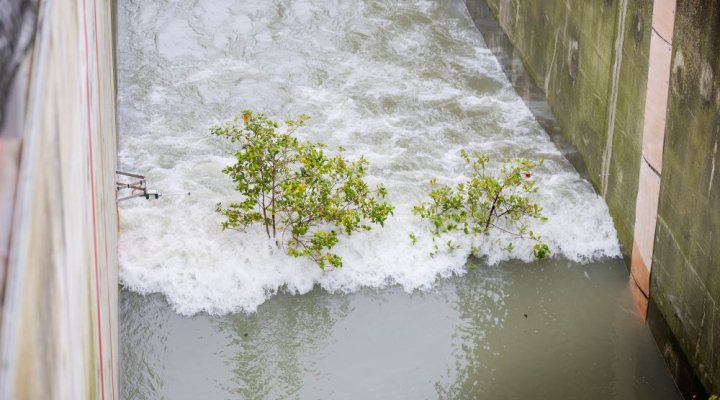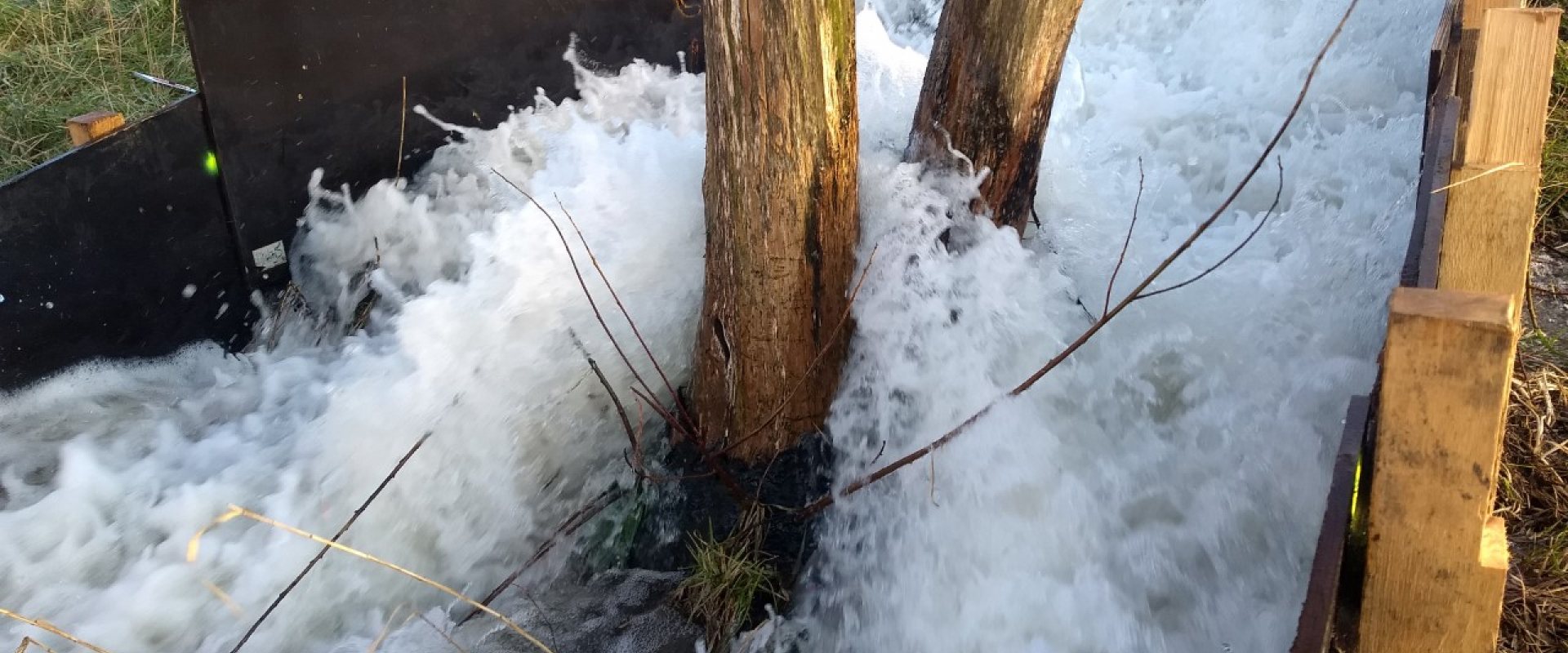
Levee tests show importance of closed grass cover
An international team of levee experts recently concluded a series of overflow tests on a levee along the Scheldt river in the Netherlands.
The field test revealed that damages to the grass cover can lead to severe erosion in case of water flows over the crest of a levee.
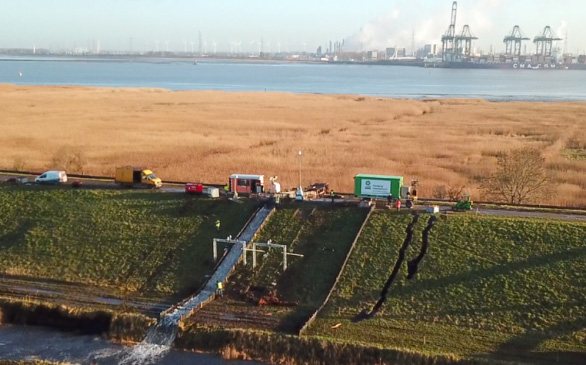

Rising sea level
Anticipating on sea level rise, it becomes important for water authorities to learn more about the remaining strength of an existing levee in case it is not high enough and a storm surge overflows the levee.
Dutch water authorities and research institutes, such as Deltares, regularly conduct field tests on levees. Mostly, involving new techniques or new materials to enforce the strength of a levee.
In this case, the levee tests mimicked the situation of a continuous overflow when the water level exceeds the height of the levee. The trials were to determine the erosion resistance of vegetation and cover layer when the water pours down over the landside slope.
Unique opportunity
The levee section along the Scheldt river protects the Hedwige-Prosperpolder but will be excavated as in due course the polder will be depoldered and the river tides will be brought in again.
Seizing this opportunity, thirteen partners from the Netherlands, Belgium, France and the United Kingdom have joined forces in the Polder2Cs project to conduct destructive field tests on the levee section.
Leading partners in this field lab study are Foundation for Applied Water Research STOWA from the Netherlands and Flanders Hydraulics Research from Belgium.
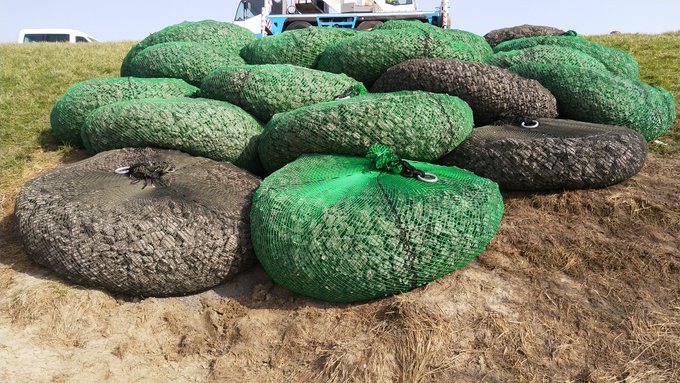

Overflow and emergency repairs
The first field tests were commenced in November last year when large holes were dug in the grass cover of the landside slope. Pumps simulated a wave overtopping with a large volume of water running over the levee slope from crest to toe.
In February the field tests recommenced involving a tree at the toe of the levee. Trees are normally removed from a levee as its presence makes strength calculations more difficult.
For sixteen hours the tree was subjected to a water stream of up to 500 l/s but still it did not gave way. The experts were not surprised that the tree withstood the water flow but did notice the limited erosion around the roots, indicating that the presence of the tree has limited effects on the erosion resistance in case of an overflow event.
Following the continuous overflow tests, several concepts of emergency repair were tested, including the covering with different geotextiles and the placement of rock bags.
Future field tests
Next on the programme is a series of tests to study the possibility of piping underneath the levee. So far levee tests focused on sandy subsoils. Many levees in the Netherlands, however are situated on subsoils with tidal sand. As is this Scheldt-levee. It is expected that an underground of tidal sand is less prone to piping.
Later this year several overtopping tests have been plannend. Finally, the levee will be breached and field tests will be conducted to repair breaches.




